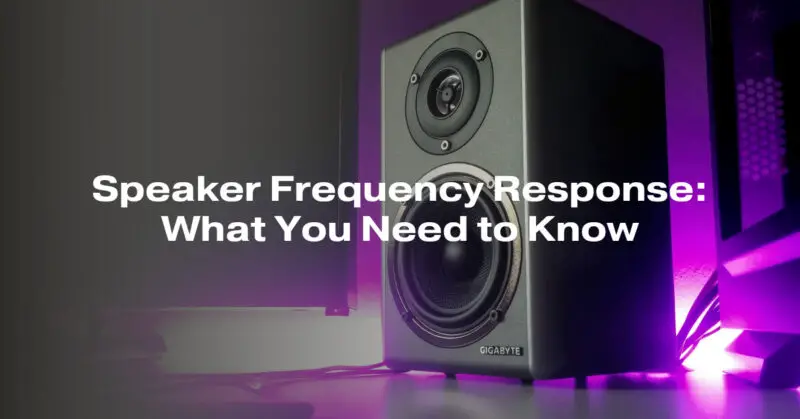Frequency response is a critical specification when evaluating speakers for any audio system. It determines a speaker’s ability to reproduce the entire audible frequency range accurately. Understanding frequency response is essential for audiophiles, audio engineers, and anyone seeking high-quality sound reproduction. In this comprehensive guide, we’ll explore the nuances of speaker frequency response, explain its significance, and provide practical insights to help you make informed decisions when selecting speakers for your audio setup.
Table of Contents:
- What Is Speaker Frequency Response?
- Defining frequency response in the context of speakers.
- Measuring frequency response in Hertz (Hz).
- The human hearing range and its relation to frequency response.
- Why Speaker Frequency Response Matters
- How frequency response impacts sound quality.
- The role of frequency response in determining speaker accuracy.
- The importance of matching frequency response to audio sources.
- Understanding Frequency Response Graphs
- Interpreting frequency response graphs.
- The significance of frequency response curves.
- Identifying key parameters in frequency response specifications.
- Flat Frequency Response and Its Significance
- The concept of a flat frequency response.
- Why flat frequency response is desirable for accurate audio reproduction.
- The impact of deviations from flat response.
- Highs, Mids, and Lows: Frequency Bands in Speakers
- Dividing the frequency range into bass, midrange, and treble.
- How different speaker components handle various frequency bands.
- The importance of seamless integration between drivers.
- Speaker Enclosures and Frequency Response
- How speaker enclosure design affects frequency response.
- Sealed vs. ported enclosures and their impact on bass response.
- Enclosure resonances and their influence on sound quality.
- Practical Considerations for Frequency Response
- Factoring in room acoustics when evaluating frequency response.
- Speaker placement and its effect on perceived frequency response.
- Using frequency response specifications to choose speakers for specific applications.
- High-Resolution Audio and Frequency Response
- The relevance of frequency response in high-resolution audio formats.
- Ensuring your speakers can faithfully reproduce high-resolution content.
- The role of frequency response in capturing audio nuances.
- Common Myths and Misconceptions
- Addressing misconceptions about speaker frequency response.
- Debunking myths related to frequency response and sound quality.
- Conclusion
- Summarizing the significance of speaker frequency response.
- Empowering audio enthusiasts to make informed decisions when choosing speakers for their audio systems.
- Achieving accurate and satisfying sound reproduction by understanding and optimizing frequency response.
By the end of this guide, you’ll have a comprehensive understanding of speaker frequency response, including its impact on sound quality and the listening experience. Whether you’re setting up a home theater, building a hi-fi audio system, or choosing speakers for professional applications, mastering the art of frequency response will enable you to select speakers that deliver the audio fidelity you desire for your specific audio needs and preferences.


